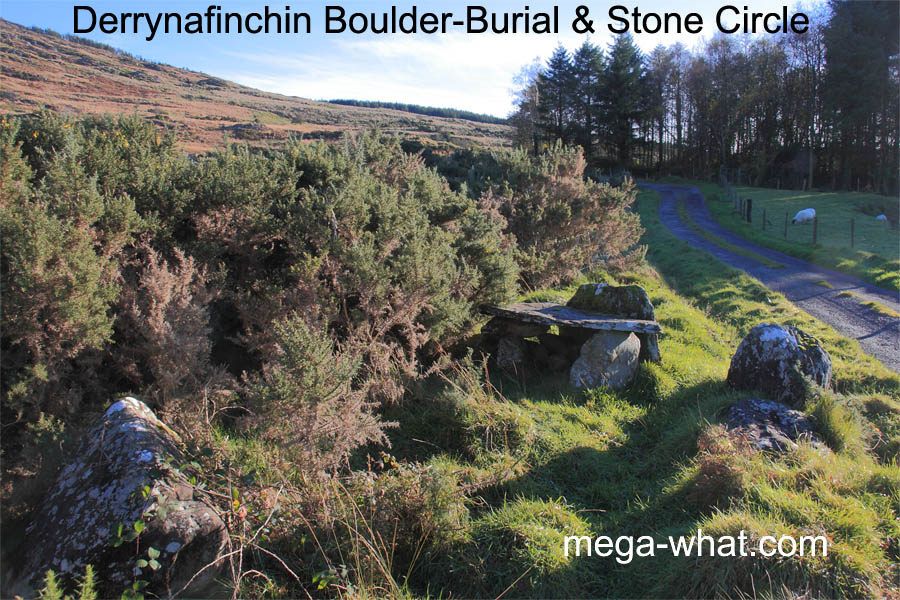
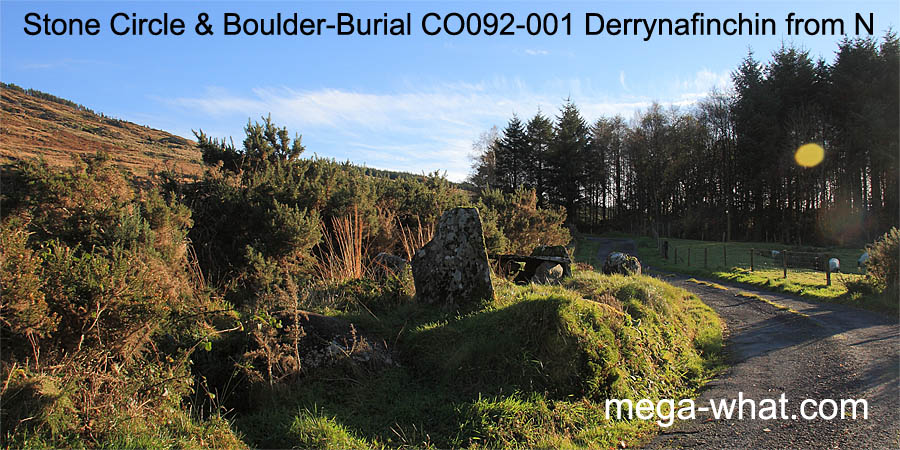 Derrynafinchin Stone Circle is hard by the roadside, is rather damaged, has a fence running through it and is becoming overgrown.
Derrynafinchin Stone Circle is hard by the roadside, is rather damaged, has a fence running through it and is becoming overgrown.
Nine stones survive of a probable eleven, four still standing. The single Boulder-Burial is roughly central.
Survey position was of necessity on the western side of the circle.
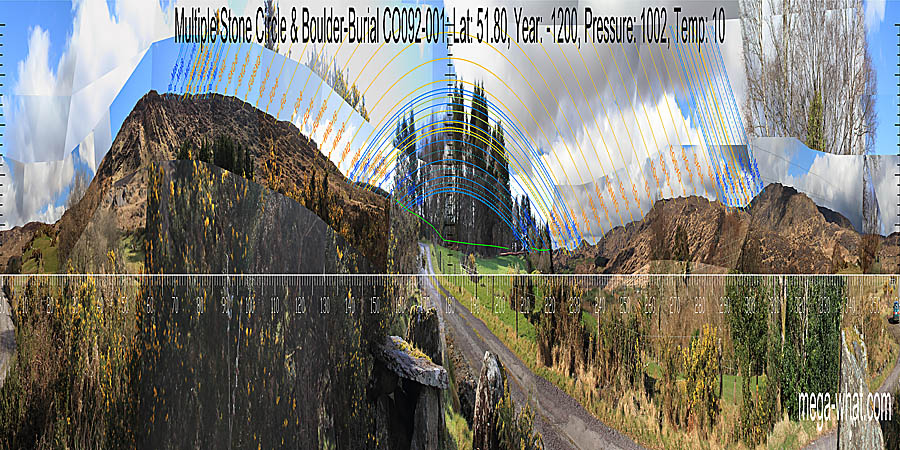 South seems to be marked by a major step that is probably the intersect of local ground with the eastern ridge [Pic].
South seems to be marked by a major step that is probably the intersect of local ground with the eastern ridge [Pic].
North is in a dip, at a step to the right of the bottom, which places it about half-way between the hilltops to either side [Pic].
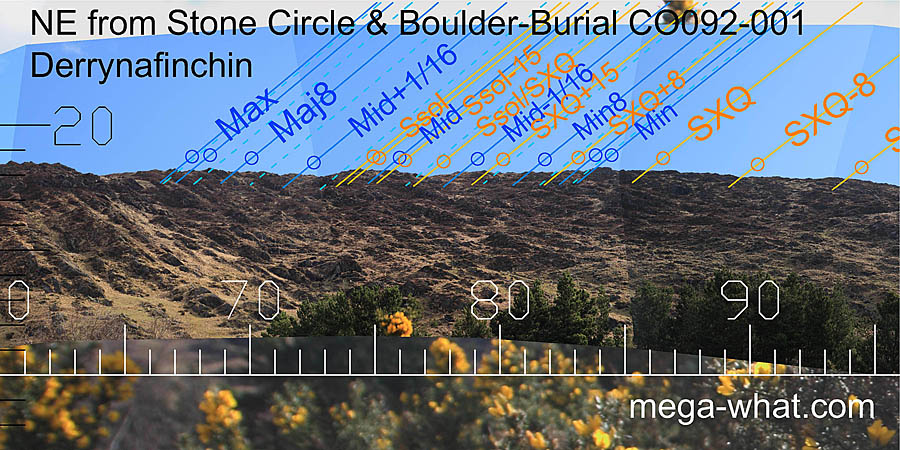 The north-eastern lunisticeLunistices are the most northerly and southerly moons of the month. The lunar equivalent of solstices - more.
range runs along slight dip in a rocky hilltop with the solstice at a rounded hump in the middle of it.
Summer cross-quarters are on a flat bit just before the start of the dip.
The north-eastern lunisticeLunistices are the most northerly and southerly moons of the month. The lunar equivalent of solstices - more.
range runs along slight dip in a rocky hilltop with the solstice at a rounded hump in the middle of it.
Summer cross-quarters are on a flat bit just before the start of the dip.
This horizon is so high that these rises are much further south than usual consequentially the circle's reverse axis is not significant [Pic].
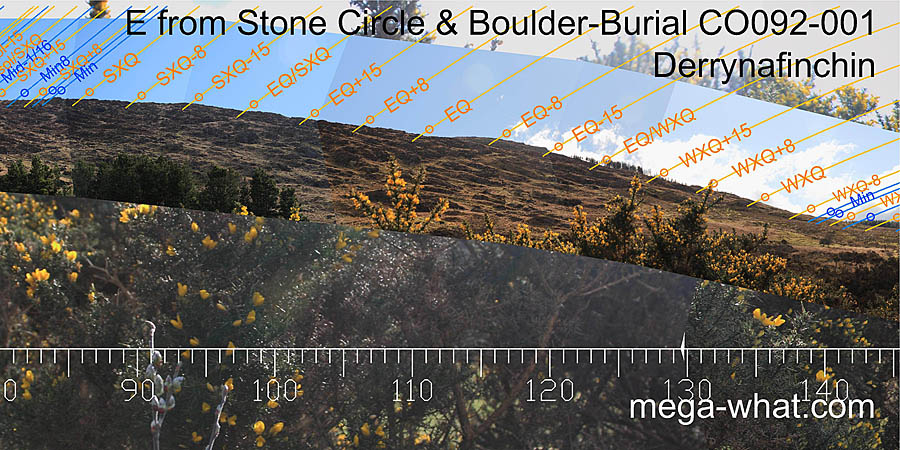 To the east is a long slope. The top is a half-month from summer cross-quarters.
The equinox is at a prominent dip in the middle that is just above a step and hump that mark a half-month south of it.
To the east is a long slope. The top is a half-month from summer cross-quarters.
The equinox is at a prominent dip in the middle that is just above a step and hump that mark a half-month south of it.
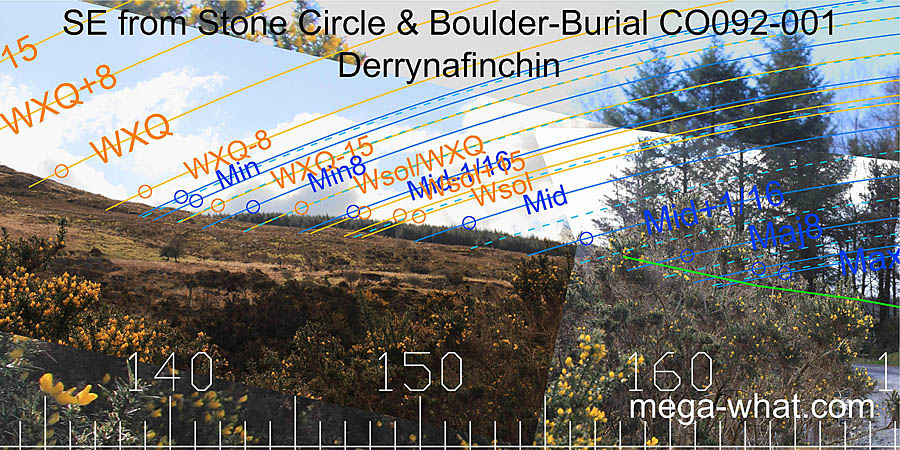 Winter cross-quarters are at the bottom of the eastern slope, just above the basal break that indicates its quarter-month bracket and the lunar minor
standstillLunistice positions vary cyclically over an 18.6 year period but are fairly static for more than a year at either end of the range.
The lunisticeLunistices are the most northerly and southerly moons of the month. The lunar equivalent of solstices - more.
range runs along this lesser lower slope but its major end is obscured.
Winter cross-quarters are at the bottom of the eastern slope, just above the basal break that indicates its quarter-month bracket and the lunar minor
standstillLunistice positions vary cyclically over an 18.6 year period but are fairly static for more than a year at either end of the range.
The lunisticeLunistices are the most northerly and southerly moons of the month. The lunar equivalent of solstices - more.
range runs along this lesser lower slope but its major end is obscured.
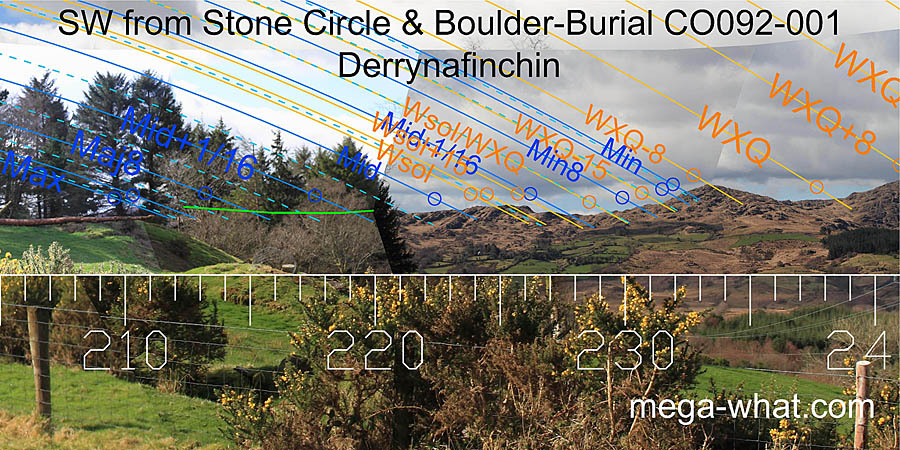 The major end of the lunisticeLunistices are the most northerly and southerly moons of the month. The lunar equivalent of solstices - more.
range is also obscured to the south-west and the minor end is once again indicated by a quarter-month bracket of the winter cross-quarter which is on a hilltop.
Winter solstice sunset is also on a hilltop and the bottom of the dip between them is half-way between them in time.
The major end of the lunisticeLunistices are the most northerly and southerly moons of the month. The lunar equivalent of solstices - more.
range is also obscured to the south-west and the minor end is once again indicated by a quarter-month bracket of the winter cross-quarter which is on a hilltop.
Winter solstice sunset is also on a hilltop and the bottom of the dip between them is half-way between them in time.
The circle axis probably indicates major standtill moonsets but accurate estimation is not currently possible.
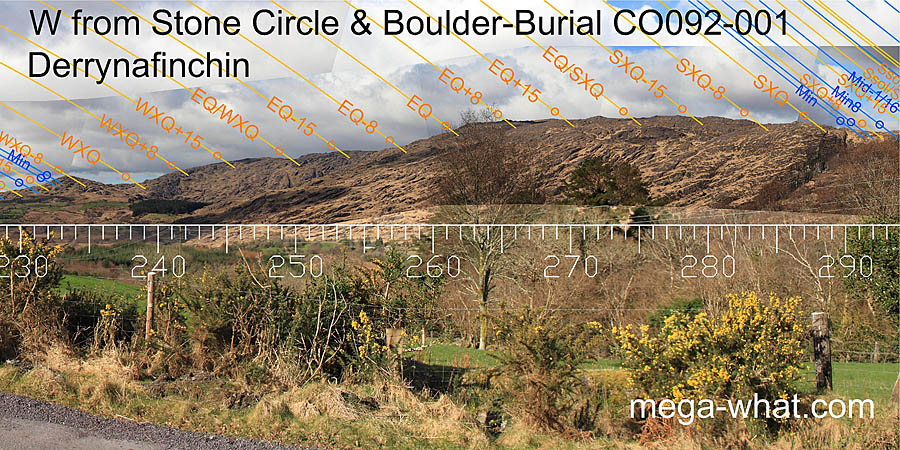 To the west, winter cross-quarters are at the basal step of a ridge and the next step is half-way to the equinox.
The equinox itself has clear markers a quarter-month either side of it.
Summer cross-quarters are at the northern end of the following hilltop and a dip in the middle is half-way between them.
To the west, winter cross-quarters are at the basal step of a ridge and the next step is half-way to the equinox.
The equinox itself has clear markers a quarter-month either side of it.
Summer cross-quarters are at the northern end of the following hilltop and a dip in the middle is half-way between them.
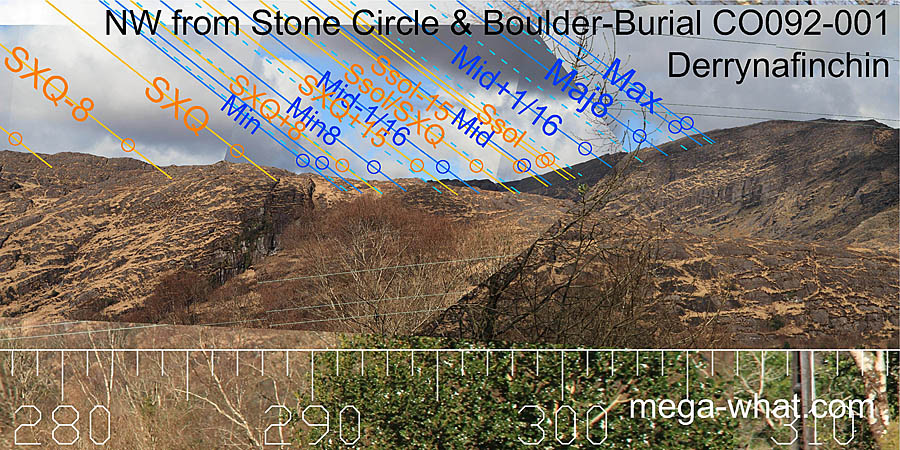 The north-western lunisticeLunistices are the most northerly and southerly moons of the month. The lunar equivalent of solstices - more.
zone again spans a dip, the bottom of which is half-way between solstice and cross-quarter.
The north-western lunisticeLunistices are the most northerly and southerly moons of the month. The lunar equivalent of solstices - more.
zone again spans a dip, the bottom of which is half-way between solstice and cross-quarter.
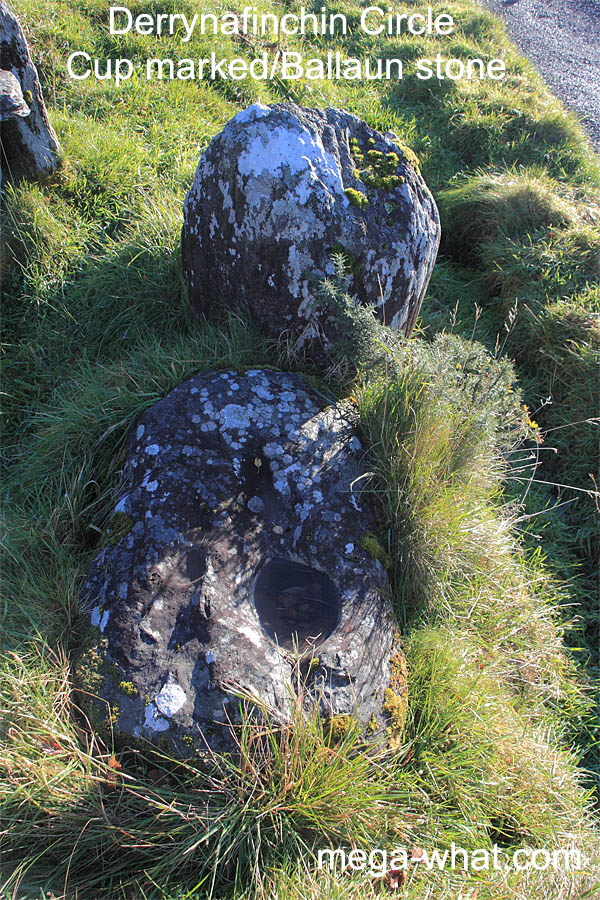 This site appears to have been re-used by early christians as there is a ballaun type hollow carved into a fallen orthostat.
The altar-like arrangement constructed against the axial stone may perhaps be from penal times. There is a more recent Marian shrine nearby.
This site appears to have been re-used by early christians as there is a ballaun type hollow carved into a fallen orthostat.
The altar-like arrangement constructed against the axial stone may perhaps be from penal times. There is a more recent Marian shrine nearby.
- Maughanasilly Stone Row is 3.7km south (185°)
- Mill Little monument group is 8.1km south-west (225°)
- Gurteen Stone Circle is over the hills to the north, c.9km @ 330°
References
- Archaeological Survey of Ireland, record details. www.archaeology.ie/archaeological-survey-ireland
- Ó'NUALLÁIN, SEÁN 1984 A Survey of Stone Circles in Cork and Kerry. Proceedings of the Royal Irish Academy 84c:1-77, p16, no.16.
- Ó'NUALLÁIN, SEÁN 1978 Boulder-Burials. Proceedings of the Royal Irish Academy 78c:75-114, p85, no.6.
- POWER, D. et al. 1992 Archaeological Inventory of County Cork, Volume 1: West Cork. Dublin: Stationary Office. p21:no.51.
- RUGGLES, C.L.N. 1999 Astronomy in Prehistoric Britain and Ireland. Newhaven & London: Yale University Press. No.ASC26.
